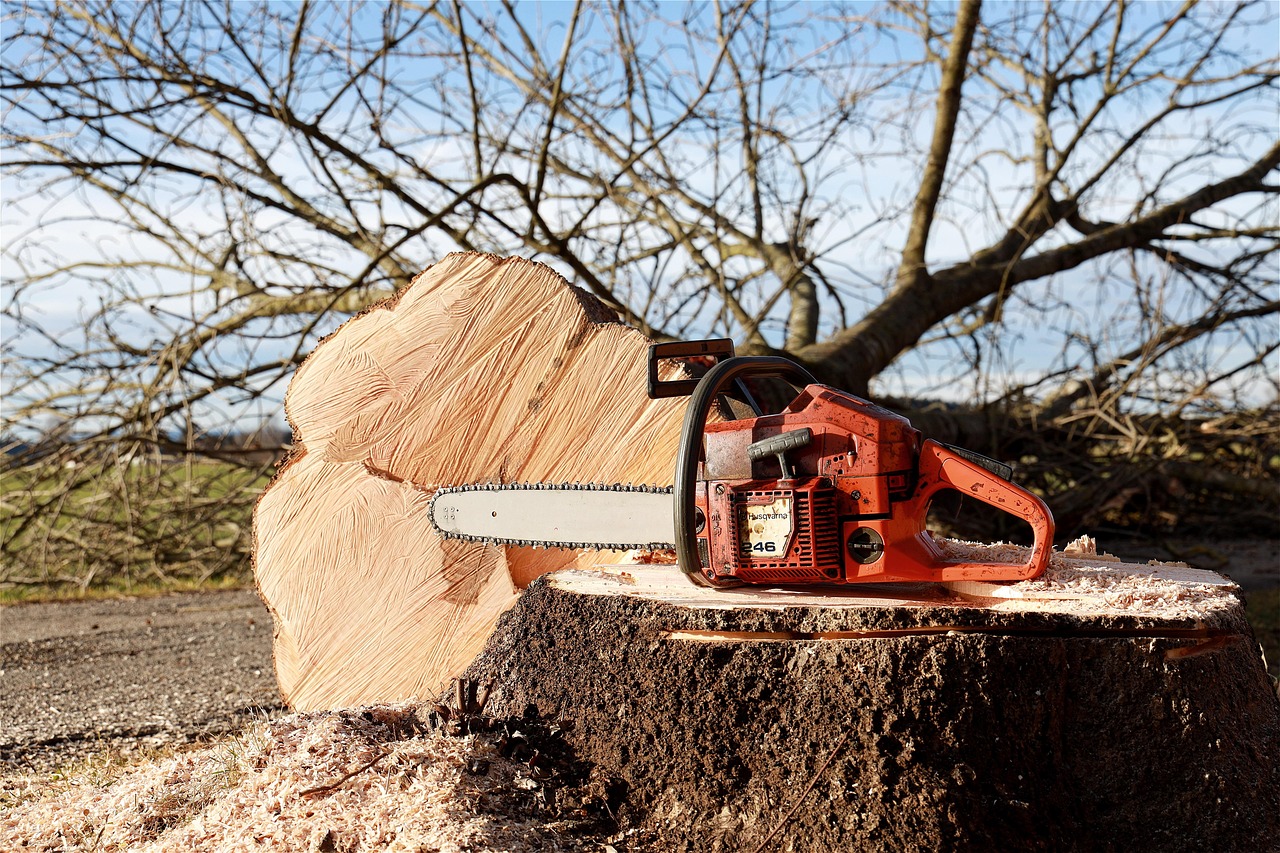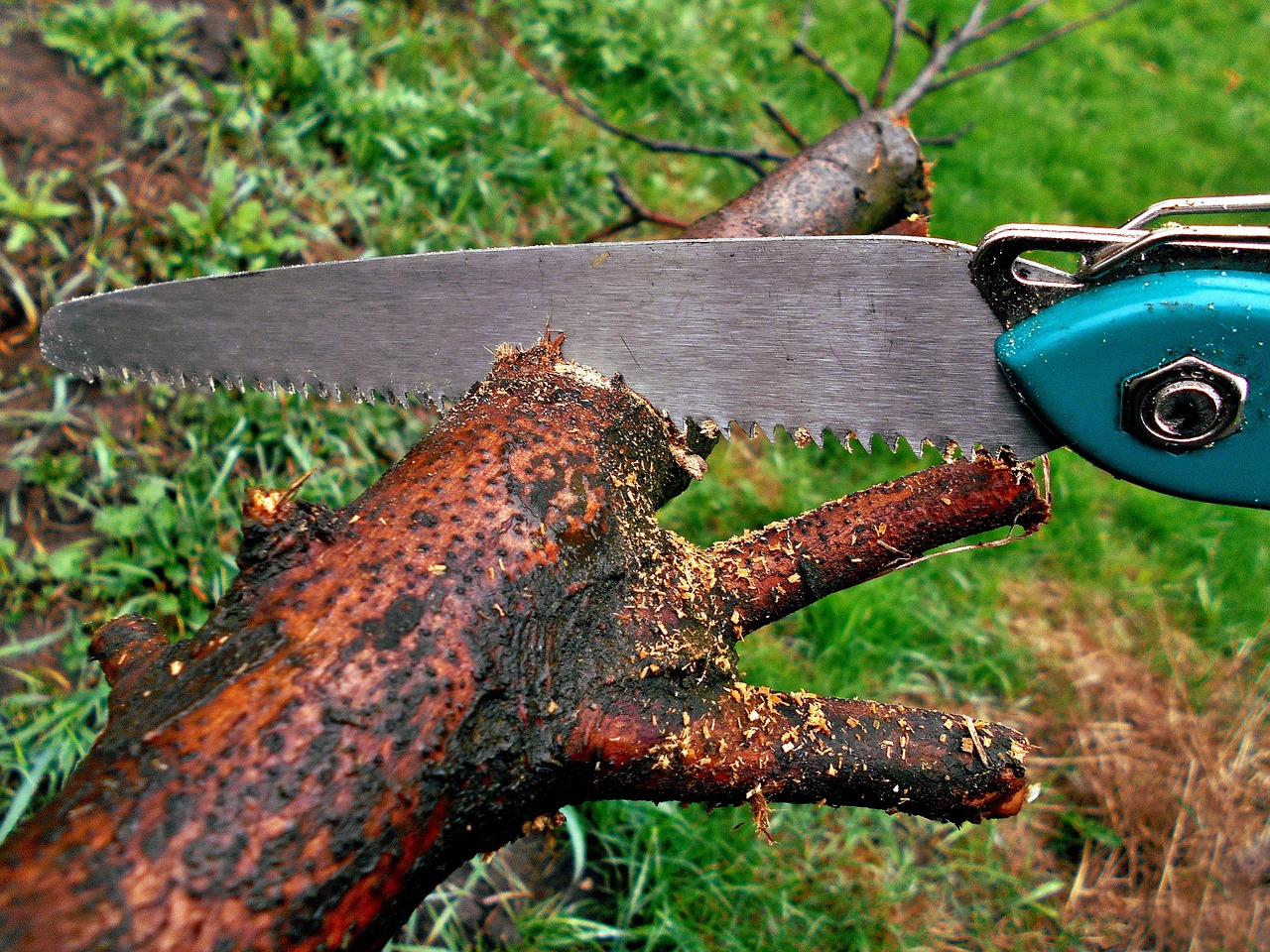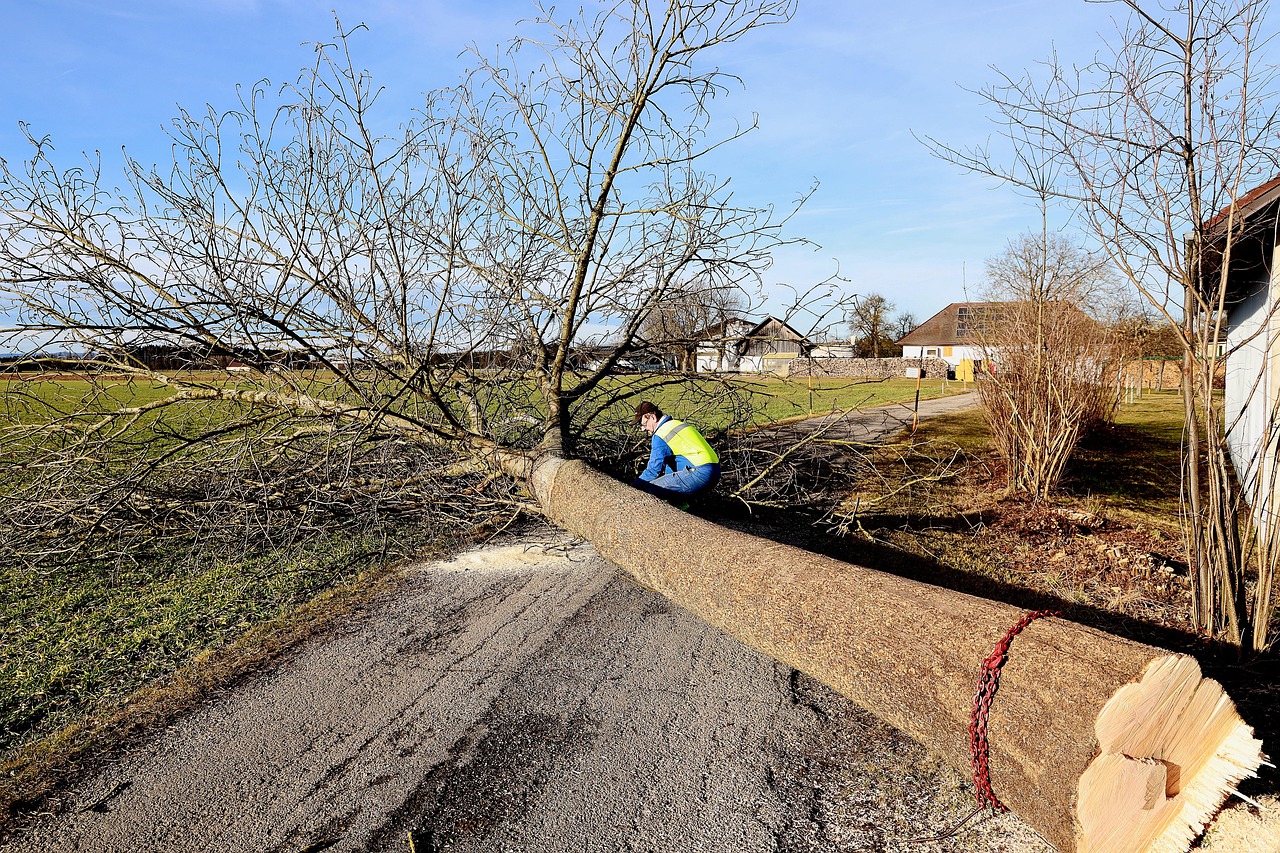A telescopic tree pruning saw is an essential tool for safely trimming high or hard-to-reach branches. Its extendable handle and sharp blades enable effective pruning from the ground, reducing risks, saving time, and promoting healthy tree growth. Learn how this versatile tool enhances tree care for homeowners and professionals alike.
Understanding Telescopic Tree Pruning Saws
Telescopic tree pruning saws are essential tools for gardeners and landscapers alike. They combine the functionality of a traditional saw with the convenience of an extendable handle. This design enables users to tackle high branches without the risks associated with climbing ladders. As trees grow taller, maintaining their health and shape becomes increasingly important. The right tools can make this task much easier.

The primary feature of a telescopic pruning saw is its adjustable length. This allows for precise cuts at various heights, making it suitable for different tree types and sizes. Many models also include a sharp, serrated blade that can efficiently cut through thick branches, ensuring a clean cut that promotes healthy growth.
Key Features of Telescopic Tree Pruning Saws
When selecting a telescopic tree pruning saw, consider the following key features:
- Length Adjustment: Most models can extend from about 6 to 12 feet, allowing users to reach higher branches safely.
- Blade Type: Look for high-carbon steel blades for durability and effective cutting.
- Weight: Lightweight designs help reduce fatigue during extended use.
- Grip: Ergonomic handles provide better control and comfort while cutting.
- Portability: Many pruning saws come with carrying straps or cases for easy transport.
Benefits of Using a Telescopic Tree Pruning Saw
The use of a telescopic tree pruning saw offers several advantages:

- Safety: Users can prune trees while remaining on the ground, significantly reducing the risk of falls or accidents.
- Accessibility: Reaching high branches becomes manageable without additional equipment.
- Efficiency: The extended reach allows for quicker trimming sessions, especially in larger yards or orchards.
- Cost-Effective: Investing in a good-quality saw can save money over hiring professional tree services.
Pro-Tips and Common Mistakes to Avoid
- When I first started using a telescopic pruning saw, I underestimated the importance of checking the extension mechanism. Always ensure the pole locks securely before climbing or reaching, or you might find the handle collapsing unexpectedly, risking injury.
- Early on, I ignored wearing safety goggles and gloves, thinking they weren’t necessary for small branches. But debris can fly unexpectedly, and protective gear saved me from a few painful scratches and eye irritations. Always wear appropriate safety gear, especially when cutting thick or hard branches.
- Initially, I tried to force through thick branches without assessing their strength. This often caused the blade to bind or dull quickly. Remember, making smaller, controlled cuts using proper technique reduces strain on the blade and makes your work more efficient.
- When I neglected to periodically clean and lubricate my saw, I noticed it became harder to extend and retracted smoothly. Regular cleaning and lubrication keep the telescoping action smooth and prolong the life of your tool.
- Using the saw during windy or rainy days seemed convenient at first, but I quickly learned that slippery conditions and falling debris increase the risk. Always prune during calm, dry weather to stay safe and maintain control.
- Trying to cut at awkward angles or overreaching often led to poor results and fatigue. I’ve found it’s best to reposition myself and plan your cuts so you can work comfortably and with controlled movements.
- When I first ignored the tree’s growth pattern, I ended up removing branches that could have been left for better health or aesthetics. Understanding your tree’s species and growth habits helps you prune more effectively and responsibly.
- Finally, I used to store my saw in a cluttered area, which sometimes caused damage to the blade or pole. Proper storage in a dry, protected case can prevent accidental damage and keep your tool ready for use when needed.
How to Choose the Right Telescopic Tree Pruning Saw
Selecting the right telescopic tree pruning saw involves considering various factors. Understanding specific needs will help in making an informed decision. Here are some tips on how to choose the best saw for your requirements:
Consider Your Tree Types
The type of trees you have will influence your choice of pruning saw. Softer woods may require less aggressive blades, while hardwoods will need sharp, durable options. Assessing your landscape will guide you towards the appropriate model.
Check Blade Length and Shape
The length and shape of the blade are crucial for effective trimming. Longer blades can reach higher branches but may be harder to maneuver. A curved blade may provide better cutting angles, making it easier to slice through tough branches.

Evaluate Build Quality
Look for models made from high-quality materials. A sturdy construction ensures longevity and consistent performance. Pay attention to user reviews regarding durability and functionality to ensure you’re making a wise investment.
Cautions When Using a Telescopic Tree Pruning Saw
<pWhile telescopic tree pruning saws offer many benefits, there are also precautions to keep in mind:
- Proper Handling: Always follow safety guidelines during use to prevent injuries.
- Watch for Power Lines: Stay aware of your surroundings, especially near electrical lines.
- Use Protective Gear: Consider wearing gloves and goggles while pruning to protect against falling debris.
Maintenance Tips for Longevity
To ensure your telescopic tree pruning saw remains in top condition, follow these maintenance tips:

- Clean After Use: Remove any sap or debris from the blade after each use.
- Lubricate Moving Parts: Use oil on joints and hinges to keep them functioning smoothly.
- Store Properly: Keep the saw in a dry place, ideally in a protective case or sheath.
With proper care and understanding, a telescopic tree pruning saw can be an invaluable tool for maintaining your garden or landscape. It empowers homeowners and professionals alike to promote healthy tree growth while ensuring safety during the process.
Choosing the Right Model for Your Needs
With a variety of telescopic tree pruning saws available on the market, it’s crucial to select a model that suits your specific needs. Factors such as the size of your trees, the frequency of use, and personal preferences play a significant role in making the right choice. This section will outline important considerations to help you make an informed decision.
Types of Telescopic Tree Pruning Saws
Telescopic tree pruning saws can generally be categorized into two main types: manual and powered. Each type has its advantages and disadvantages, which are worth exploring.
Manual Telescopic Pruning Saws
Manual telescopic pruning saws are operated by hand and rely on the user’s strength to cut through branches. They usually feature a sharp, serrated blade attached to a telescoping handle. Some key characteristics include:
- Lightweight: Easier to handle and carry around.
- Cost-Effective: Generally more affordable than powered options.
- Less Maintenance: No batteries or motors to worry about.
These saws are ideal for those who have smaller gardens or occasional pruning tasks. However, they may require more effort when cutting thicker branches.
Powered Telescopic Pruning Saws
Powered telescopic pruning saws use electricity or batteries to operate. They often provide greater cutting power and efficiency. Key features include:
- Effortless Cutting: Ideal for larger branches or extensive trimming jobs.
- Adjustable Settings: Many models offer speed settings for improved control.
- Less Physical Strain: Reduces fatigue during prolonged use.
While these models are generally more expensive and require regular maintenance, they are perfect for professional landscapers or homeowners with extensive tree care needs.
Understanding Cutting Techniques
Knowing the appropriate cutting techniques is essential for effective tree pruning. Proper techniques can enhance the health of the tree while ensuring your safety during the process. Here are some key techniques to consider:
The Three-Cut Method
The three-cut method is a widely recommended technique for pruning larger branches. This method minimizes the risk of bark tearing and provides a clean cut. Here’s how it works:
- First Cut: Make an undercut about one-third of the way through the branch. This cut should be made on the side facing the trunk.
- Second Cut: Make a cut slightly further out on the branch, cutting downwards until you meet the first cut. This will allow the branch to fall without tearing the bark.
- Third Cut: Finally, make a clean cut just outside the branch collar. This will promote healing and minimize damage to the tree.
Thinning vs. Topping
Understanding the difference between thinning and topping is crucial for maintaining healthy trees:
- Thinning: Involves removing select branches throughout the tree to improve air circulation and light penetration. This encourages healthy growth.
- Topping: Involves cutting off the tops of trees, which can lead to weak growth and increased vulnerability to pests and diseases. This technique is generally discouraged.
Safety Gear and Precautions
Ensuring safety while using a telescopic tree pruning saw should always be a priority. Proper safety gear can protect you from injuries caused by falling debris or accidents during cutting. Here are some essential safety items to consider:
Essential Safety Gear
- Protective Eyewear: Safety goggles shield your eyes from flying debris.
- Gloves: Sturdy gloves protect your hands from cuts and blisters.
- Helmet: A hard hat can protect your head from falling branches.
- Steel-Toed Boots: Footwear with steel toes offers extra protection if heavy branches fall.
Additional Safety Tips
Besides wearing safety gear, consider these additional precautions when using a telescopic tree pruning saw:
- Assess Your Surroundings: Always check for nearby power lines or structures that could obstruct your work.
- Work with a Partner: Having someone nearby can help in case of emergencies.
- Avoid Rainy or Windy Days: These conditions can increase the risk of accidents while pruning.
By taking these precautions seriously, you can ensure a safer, more effective tree pruning experience with your telescopic saw.
Maintenance and Care for Your Telescopic Tree Pruning Saw
To ensure the longevity and efficiency of your telescopic tree pruning saw, regular maintenance and care are essential. Proper upkeep not only keeps your tool in optimal condition but also enhances safety during use. This section will cover important maintenance practices, storage tips, and troubleshooting common issues.
Regular Cleaning
After each use, it is vital to clean your telescopic tree pruning saw thoroughly. Dirt, sap, and other debris can accumulate on the blade and affect its performance. Here’s how to effectively clean your saw:
- Remove Debris: Use a soft brush or cloth to wipe away dirt and sap from the blade.
- Wash the Blade: For tougher residues, wash the blade with warm soapy water and a sponge, then rinse and dry it completely.
- Check for Rust: Inspect the blade for any signs of rust. If found, use steel wool or a rust remover to eliminate it promptly.
Lubrication
Lubricating the moving parts of your pruning saw is crucial for smooth operation. A well-lubricated saw can reduce wear and tear, ensuring a longer lifespan. Here are steps for proper lubrication:
- Identify Moving Parts: Focus on joints, hinges, and the telescoping mechanism.
- Apply Lubricant: Use a light machine oil or silicone spray to lubricate these areas. Avoid over-lubricating, as excess oil can attract dirt.
- Wipe Excess: After applying lubricant, wipe off any excess to prevent buildup.
Storage Practices
Storing your telescopic tree pruning saw properly can help prevent damage and prolong its life. Consider the following storage tips:
- Keep Dry: Store the saw in a dry location to prevent rusting and degradation of materials.
- Avoid Extreme Temperatures: Do not store the saw in very hot or cold environments, as extreme temperatures can affect its integrity.
- Use Protective Cases: If your saw came with a protective case or sheath, use it during storage to prevent accidental damage.
Troubleshooting Common Issues
Even with proper maintenance, users may encounter common issues with their telescopic tree pruning saws. Knowing how to troubleshoot these problems can save time and enhance your cutting experience.
Blade Issues
If you notice that the blade is not cutting effectively, consider these common blade-related issues:
- Dull Blade: A dull blade can significantly hinder performance. Sharpen the blade using a sharpening stone or file designed for this purpose.
- Misalignment: Ensure that the blade is properly aligned. A bent or misaligned blade can lead to inefficient cutting.
- Loose Fasteners: Check that all screws and fasteners are tight. Loose components can affect the stability of the blade during use.
Telescope Mechanism Problems
The telescoping mechanism is critical for adjusting the length of your saw. If it becomes difficult to extend or retract, consider the following solutions:
- Inspect for Obstructions: Check for dirt or debris that may be blocking the mechanism. Clear any obstructions carefully.
- Lubricate Moving Parts: As mentioned earlier, applying lubricant can help ease movement in the telescoping mechanism.
- Check for Damage: Look for cracks or damages in the pole that may be causing issues. If damaged, consider replacing that section or consulting a professional.
Enhancing Your Pruning Experience
To maximize the benefits of using a telescopic tree pruning saw, consider these additional tips to enhance your pruning experience:
Selecting the Right Time for Pruning
The timing of your pruning can impact tree health and growth. Here are some guidelines:
- Seasonal Timing: Late winter or early spring is often ideal for pruning many trees as they enter dormancy.
- Avoid Flowering Periods: Refrain from heavy pruning during flowering seasons to avoid losing blooms.
- Post-Storm Assessment: After storms, check for damaged branches and prune as necessary to maintain tree health.
Engaging in Continuous Learning
Staying informed about tree care practices can significantly improve your skills as a gardener or landscaper. Consider these methods to enhance your knowledge:
- Read Books and Articles: Explore resources focused on arboriculture and horticulture.
- Attend Workshops: Participate in local gardening or landscaping workshops to gain hands-on experience.
- Join Online Forums: Engage with other gardening enthusiasts through online platforms to share tips and experiences.
By maintaining your telescopic tree pruning saw properly and staying informed about best practices, you can enjoy a successful and rewarding gardening experience.
Maximizing Efficiency with Telescopic Tree Pruning Saws
Using a telescopic tree pruning saw can significantly enhance your efficiency when caring for trees, particularly in hard-to-reach areas. Understanding how to maximize the effectiveness of this tool can lead to better results and a more enjoyable pruning experience. Here are some tips to help you get the most out of your saw:
Planning Your Pruning Strategy
Before you start pruning, it’s essential to have a clear plan. This includes assessing the health of your trees and determining which branches need trimming. Consider the following steps:
- Conduct a Tree Health Assessment: Examine your trees for signs of disease, damage, or overgrowth. Identifying problem areas will help you prioritize your pruning tasks.
- Set Clear Goals: Decide if you are pruning for aesthetic reasons, to promote growth, or to remove damaged branches. Having specific goals will guide your approach.
- Create a Pruning Schedule: Regularly scheduled pruning will help maintain the health of your trees. Plan to prune during the appropriate seasons for each tree type.
Utilizing Proper Techniques
Employing correct pruning techniques will ensure that your trees remain healthy and continue to thrive. In addition to the three-cut method discussed earlier, consider these techniques:
- Angle Your Cuts: Make cuts at a slight angle to encourage water runoff and reduce the risk of rot.
- Leave Branch Collars: Always make cuts just outside the branch collar, as this tissue helps the tree heal.
- Avoid Over-Pruning: Removing too many branches can stress the tree. Aim to remove no more than 25% of a tree’s foliage in one season.
Understanding Tree Growth Patterns
Different tree species have varied growth patterns and pruning needs. Familiarizing yourself with these patterns can lead to more effective pruning results. Here are a few considerations:
- Growth Habits: Some trees have a naturally narrow shape and require less pruning, while others may spread wide and need significant shaping.
- Flowering and Fruiting: Know when your trees flower or bear fruit. Pruning at the wrong time can lead to lost blooms or reduced fruit yield.
- Pest and Disease Management: Healthy trees are less susceptible to pests and diseases. Regular pruning helps maintain good air circulation and sunlight exposure.
Final Thoughts
A telescopic tree pruning saw is an invaluable tool for anyone looking to maintain their landscape effectively. Its versatility allows users to tackle hard-to-reach branches while enhancing safety and efficiency. By understanding the features of your saw, practicing proper techniques, and engaging in continuous learning, you can ensure that your gardening efforts yield fruitful results.
Regular maintenance of your pruning saw, alongside strategic planning for tree care, can significantly improve both the health of your trees and your overall gardening experience. By following the guidelines and tips outlined throughout this article, you will be well-equipped to handle any pruning task with confidence.
In conclusion, investing in a high-quality telescopic tree pruning saw is not just about acquiring a tool; it is about enhancing your capability as a gardener. With the right techniques and knowledge, you can transform your outdoor space into a thriving environment for both plants and wildlife.
